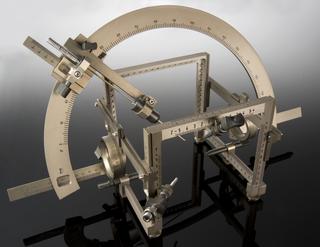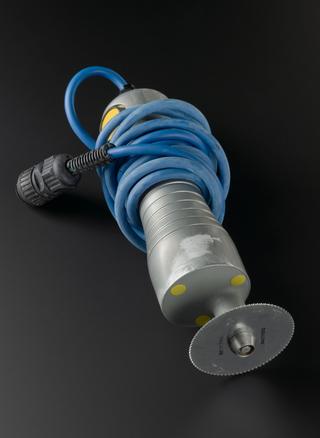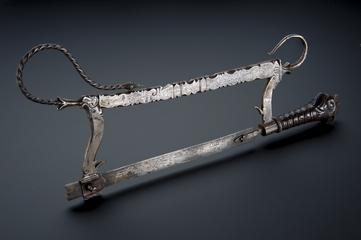

Amputation knife, probably by Vigneron of Paris, France, 18th century, steel and ebony
Made from steel with an ebony handle, this surgical knife was used for amputations. Its curved shape was typical of amputation knives of the period, when surgeons tended to make a circular cut through the skin and muscle around the bone before that was then cut with a saw. In time, the technique changed and the initial cutting left a flap of skin which could then be used to cover the exposed limb stump. A straight knife was found to be better for this technique, so curved amputation knives gradually disappeared in the 1800s.
It is thought that this example was made by Vigneron, a surgical instrument maker in Paris, France, sometime in the 1700s. At this time, patients had at best only alcohol or herbal remedies for pain relief.
Details
- Category:
- Surgery
- Collection:
- Sir Henry Wellcome's Museum Collection
- Object Number:
- A622732
- type:
- amputation knife



